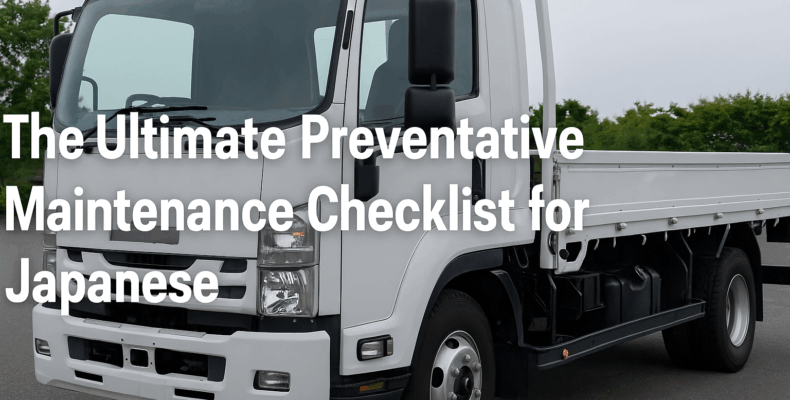When it comes to owning a Japanese used truck, reliability is one of the biggest advantages. However, to keep that reliability for years to come, preventative maintenance is essential. Waiting for a problem to occur can lead to expensive repairs and unexpected downtime. On the other hand, regular inspections and minor repairs will extend the life of your truck and save you money in the long run.
Whether you drive a Hino Ranger, Isuzu Elf, Mitsubishi Fuso Canter, or Nissan Atlas, this checklist will help you protect your investment and keep your truck road-ready.
Why Preventative Maintenance Is So Important
Preventative maintenance means solving problems before they become serious. Unlike emergency repairs, this kind of care is predictable and cost-effective. Moreover, trucks that receive regular service have higher resale value and better fuel economy.
Especially if you’re driving in overseas conditions—hot weather, rough roads, or long-distance routes—this type of routine care becomes even more critical.
✅ Complete Preventative Maintenance Checklist
Below is a simple, effective checklist every Japanese truck owner should follow. You can print it, save it, and check off tasks as you go.
🔧 Daily Checks
-
Check engine oil level
-
Look for fluid leaks under the truck
-
Inspect tire pressure and condition
-
Test brake pedal feel
-
Listen for unusual engine or brake noises
🔍 Weekly Checks
-
Inspect coolant and radiator fluid level
-
Check battery terminals for corrosion
-
Ensure lights, indicators, and wipers work
-
Top up windshield washer fluid
-
Verify air filter is clean
🧰 Monthly Checks
-
Inspect belts and hoses for cracks or wear
-
Test clutch and transmission response
-
Look for rust or body damage
-
Rotate tires if uneven wear is visible
-
Inspect suspension and shock absorbers
🛠️ Every 5,000–10,000 km
-
Change engine oil and replace the oil filter
-
Check transmission and differential fluids
-
Flush brake fluid if dirty
-
Replace fuel filter if needed
-
Inspect exhaust system for leaks or rust
🔁 Every 20,000–40,000 km
-
Flush and replace coolant fluid
-
Perform full brake system inspection
-
Replace air filter and cabin filter
-
Balance and align wheels
-
Check U-joints and driveshaft
Pro Tip: Keep a Maintenance Log
Write down every service performed, including the date and mileage. This log will help you plan future services and is extremely useful when reselling your truck.
Start With a Reliable Used Truck
Preventative maintenance works best when the truck has been well maintained from the start. That’s why it’s critical to choose a trusted exporter when buying a used truck from Japan.
👉 Top 5 Trusted Japanese Used Truck Exporters for Global Buyers
This guide lists highly rated exporters who offer clean, inspected trucks with full maintenance records—perfect for long-term ownership overseas.
Final Thoughts
Your truck is more than just a vehicle. It’s a business partner, a tool for growth, and a safety responsibility. Taking a few minutes each day or week for preventative checks helps avoid breakdowns and keeps your truck running at its best.
With the right care, your Japanese used truck can serve you for many years—delivering excellent performance, fuel efficiency, and peace of mind wherever you go.
